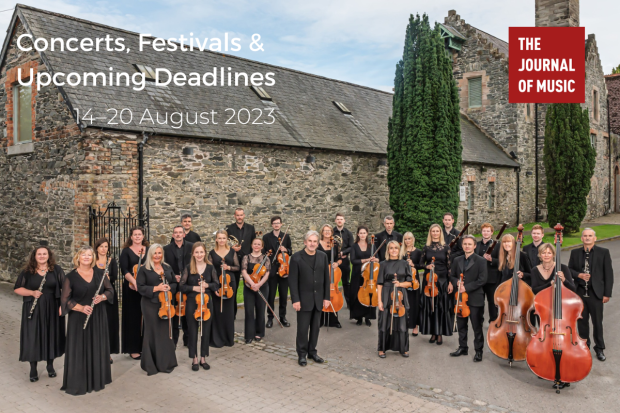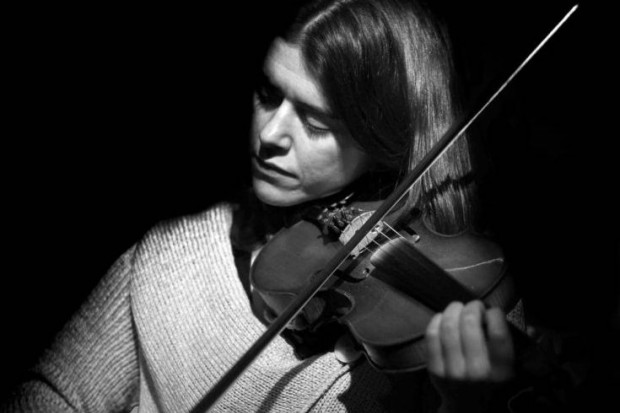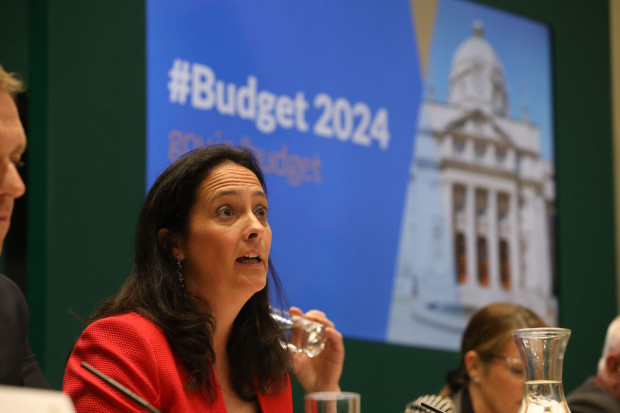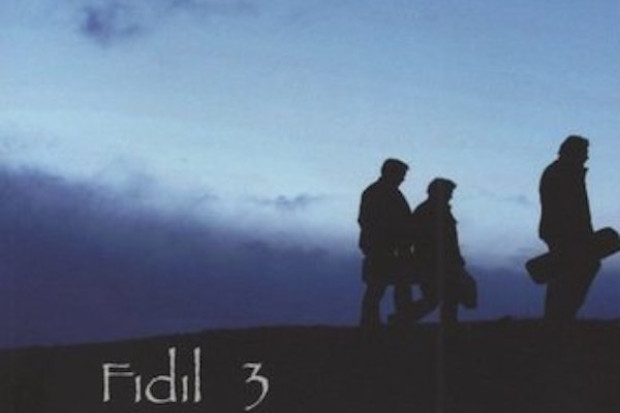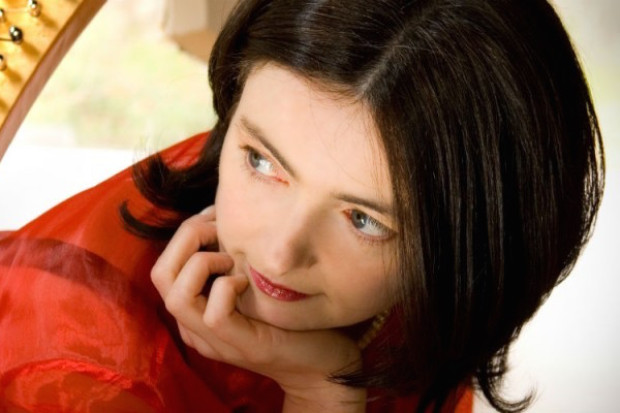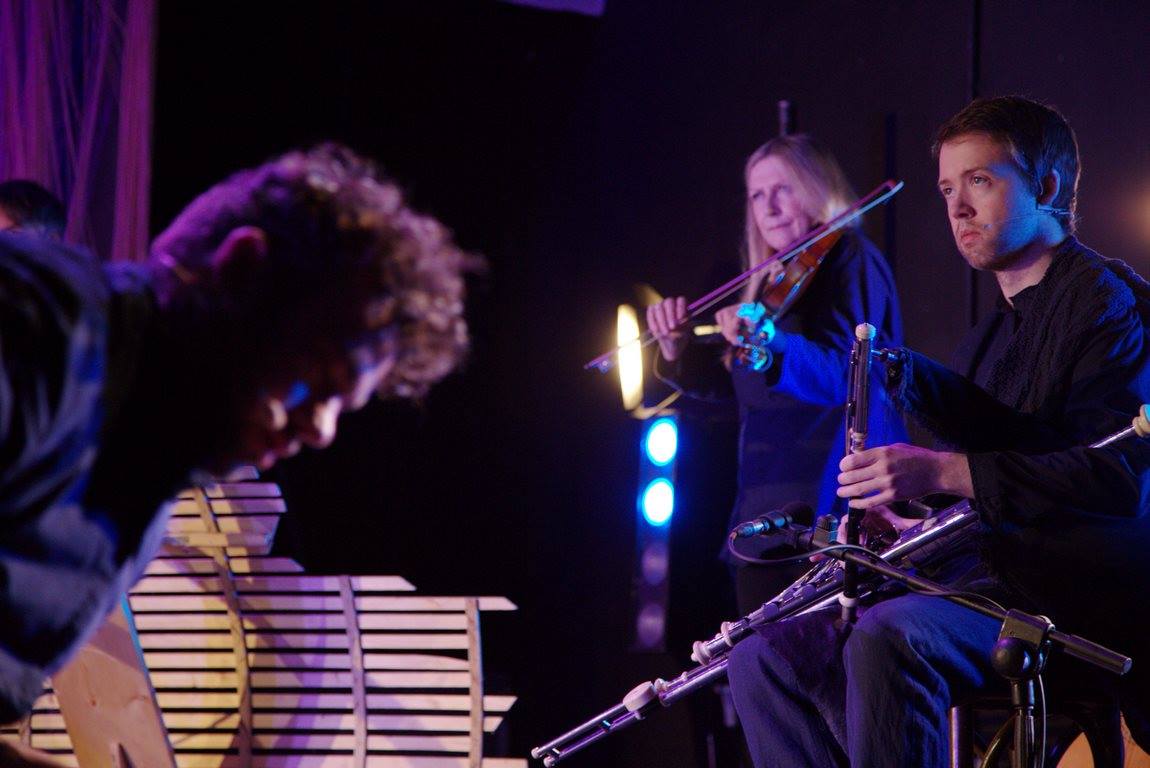
A scene from ‘Aisling?’
The Challenge to the Gaeltacht Remains
When I was a child, every summer our family would make the journey from Cork city to the Gaeltacht of Corca Dhuibhne in West Kerry – staying first by Béal Bán strand; then for several wonderful years in Tigh Lisa in Dún Chaoin; and after that in a scatter of other locations. In those Dún Chaoin years, the traditional naomhóg boat was used for fishing, checking lobster pots and for occasional trips to the Blaskets; most families kept cows, heifers or some sheep; churns of milk were still brought to the creamery on donkey carts; potatoes and other staples were grown and turf was brought down from the hillside. There were tourists but many of them – the families like ours or the gaggles of nuns who tended to do their swimming discreetly at unspectacular Baile an Chala rather than on the long curve of sand at Béal Bán – were more than happy to speak Irish. There were of course some English-speaking visitors and a handful from the Continent. The film Ryan’s Daughter brought brief ferment and very useful cash (drinking money for some: ‘Níor bhánaigh mo chac an samhradh ar fad,’ ‘Pound’ – a local talker, singer and merry-maker – recounted gleefully, making poetry of a physiological manifestation of large-scale Guinness consumption…). A little museum appeared in Feothanach and potteries began to spring up. Students from Cork (including a number who would become known through Innti magazine) did volunteering work for the community co-op…
Now tourism reigns and those who serve it can make a decent living. In pubs and restaurants, visitors from all around the world are greeted in English, but the area boasts its own beers, gins, cheeses and food festival. For musicians, Dingle is both a recognized and desirable stop on the international touring circuit and a break from it, offering performers intimate listening and respect. At the same time, Corca Dhuibhne is producing its own musicians across many genres, and a variety of poets, writers, DJs, artists and broadcasters. This local artistic economy (with its gradations from leisure-time activity to full professionalism) is plugged into the larger national and international economy. Meanwhile, numbers of former farmsteads provide secondary residences for non-Irish-speakers. Bad planning has allowed some hideous houses to be built and reasonable houses to be hideously placed. Good planning has brought the subtly integrated interpretative centre that looks out at the Blaskets and that, among other things, presents the naomhóg as a cultural artefact of a former way of life – which brings us, rather circuitously, to Aisling?.
Vision and direction
On stage, in this show that I caught on its visit to the Olympia in Dublin on 28 September, the skeleton of a currach (sister to the naomhóg) was a versatile stage prop, a focus for narrative and a symbol of the Gaeltacht, its life, music and language. Aisling? – the title sends us back to the vision poems of the eighteenth century and to the national destiny invoked by the poets of 1916 – is a challenge to the Gaeltacht and to the Irish-speaking community. Are they drifting without vision or direction? Is it not time to take control of their own story? Questions are asked directly through declamation, poetry and song, but also through the very concentration of Gaeltacht talent on display.
That talent was indeed impressive. Throughout, a strong sense of shared pleasure in music-making prevailed. This was not a line-up of stars awaiting their turns. Within the high-energy world of Altan, Mairéad Ní Mhaonaigh’s singing can come across as pleasant relief; here it was powerful in itself and totally engaging, while her fiddle playing was at its finest; Pól Ó Ceannabháin sang with great ease and authority; Johnny Óg Connolly’s box playing was a delight – as was Caoimhín Ó Fearghail’s piping (with untroubled switches to flute or bouzouki on occasion). Méabh Ní Bheaglaoich sang sweetly and played the accordion; Ciarán Ó Maonaigh buttressed the fiddle contribution. Róisín Seoighe was fleet and airy as a dancer; her singing was intentionally forceful but sometimes more trust in lung-power would have saved pressure on the throat (a voice is a precious thing).
The songs extended beyond the traditional into contemporary genres. This was even truer of the poetry or recitation or declamation. Members of the ensemble voiced works by previous generations: Seán Ó Ríordáin’s ‘Fill Arís’ (a poem I hear as moving more quietly towards the release at the end than was evidenced here) and, indirectly linking back to the Gaeltacht Civil Rights movement, Joe Steve Ó Neachtain mulling over the damage done by oppression and bad teaching or angrily playing on old motifs – ‘Tá crúb na déirce sínte amach ag Cáit Ní Dhuibhir’ (‘Ireland’s paw’s stuck out for charity’). Some of the cast provided texts of their own: Eoghan Mac Giolla Bhríde, for example, ranged from exhilarating identification with sea, wind and space (‘Ceolann an Fhairsingeacht,/a mo mhealladh;/ agus slogaim an ghaoth’ – ‘sheer space making music, leading me on; and I gulp wind’) to piled-up urgings (‘ná glac go bog é, ná h-ól suas é, ná slog é/ná glac i do luí síos é…’ – ‘don’t take it easy, don’t drink it up, don’t swallow it, don’t take it lying down…’).
The stage design (by Seán Ó Flaithearta) was uncluttered and allowed freedom of movement and expression. The contemporary dance element (featuring Sorcha Ní Chéide, Eoin Mac Donncha and Eoghan Geoghegan) worked well enough, though not pushed very far – and here we come to an issue that concerns the overall conception of the show rather than individual performances or details. The choreography of Aisling? – the actors standing as if ready to answer the call to battle – was expressive in its way but the rather pageant-like style, in combination with the metaphor of the journey, seemed in some ways more suited to 1966, the fiftieth anniversary of the 1916 rising, than to 2016 or 2018. As suggested above, the Gaeltacht of the 1960s was touched by new media and socio-economic forces. The movement for Cearta Sibhialta na Gaeltachta or the agitation over the intended closure of the primary school in Dún Chaoin shone a light on community issues and, to a greater or lesser extent, expressed in action a vision for the future of the Gaeltacht. It is also worth remembering that Seán Ó Riada’s turn to the Gaeltacht was accompanied by a recasting of the way traditional music was played – this doesn’t mean that he provided a template that should be followed – and by engagement with the new media of the day. It was possible to think that the Gaeltacht could be maintained, with help from supporters and from the state, within its physical boundaries. More than that, it was possible to imagine a re-invigoration of the language and cultural movement and a creative renewal of the language project that had been mishandled on the foundation of the Free State. Such a renewal would transform the state project itself and the place of the Irish language within it.

A call for renewal
Aisling? states the need for renewal today, but what form might this take? Pride in language, in cultural heritage and in the impulse behind the creation of the Irish state are all fine things (and resoundingly stated in the booklet that comes with the show), but the ground on which Aisling? was conceived and the metaphors through which it speaks seem too simple and undeveloped to address the realities on the ground of the Gaeltacht today, with the transformation it has undergone, with the web of languages, economies, cultures and technologies that overlay it, and with the multiple maps needed to negotiate its boundaries, rocky coasts and horizons. (Michael Cronin’s An Ghaeilge san aois nua/Irish in the new century – not a text and translation but an address to two different language publics – is a rare exploration of this territory and needs to be read or re-read, urgently.)
Irish traditional musicians from the Gaeltacht who wish to make a living from their art perform and project – and market and reshape – that tradition on stages around the world; they sell their work through networks unimaginable in past decades. Tradition is not frozen and is always under negotiation. The present-day challenges for those who want to move forward in Irish, in the Gaeltacht or elsewhere, while taking nourishment from the accumulated knowledge and traditions the language makes available, are enormous. Aisling? does a certain amount and well, but it is a call for a renewal of vision rather than an enactment or mapping of such vision. Can we look forward to these same performers and others working their way towards Aisling a Dó?
For more on Aisling?, visit http://aisling2018.com.
Published on 11 October 2018
Barra Ó Séaghdha is a writer on cultural politics, literature and music.










